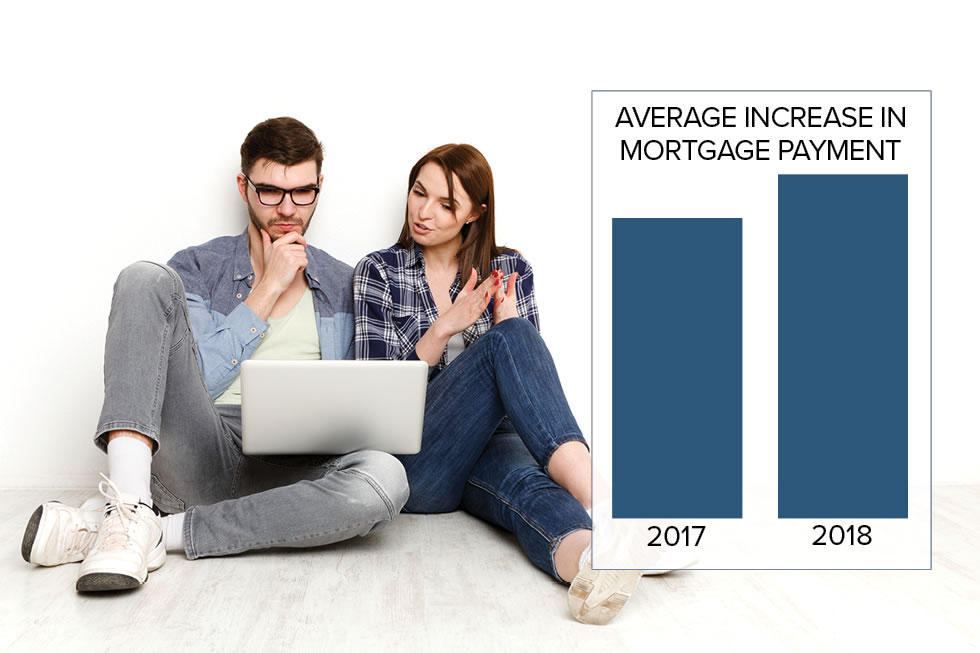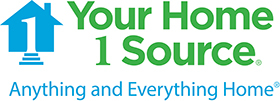
The times they are a-changin’. And that goes for mortgage payments as well.
According to Realtor.com, rising home prices and steadily increasing interest rates pushed the average monthly mortgage payment up nearly 14.5 percent nationwide between June 2017 and June 2018, making homes less affordable than before.
If you haven’t checked rates lately, you might be surprised, as they’ve been creeping up over the past few months. According to the Mortgage Bankers Association, for the week ending July 13, 2018, mortgage rates were as follows:
- The average rate on a 30-year, fixed-rate conforming mortgage ($453,100 or less) was 4.77 percent. The average rate on a 15-year fixed was 4.22 percent.
- The average rate on a 30-year, fixed-rate jumbo loan (greater than $453,100) was 4.66 percent.
- The average rate on a 30-year, fixed-rate mortgage backed by the FHA was 4.78 percent.
- The average rate for a 5/1 adjustable-rate mortgage was 4.12 percent.
And, according to mortgage software company Ellie Mae, the average rate on a 30-year, fixed-rate VA mortgage was 4.69 percent in June. A recent Realtor.com analysis revealed that mortgage payments have increased dramatically in many markets around the nation, particularly those where home prices are rising faster than the national average. In San Francisco, for example, the monthly mortgage payment for a median-priced home increased 15.7 percent, or by $725, between June 2017 and June 2018. Other markets with high increases include Los Angeles, Boston, San Diego, Minneapolis and Phoenix.
"Buyers can expect to see more of their paychecks go to their mortgage payments this year," said Danielle Hale, chief economist for Realtor.com. "Tight inventory has limited options for buyers and sent home prices soaring in many markets. Now, home buyers will also have to factor in higher mortgage rates."
Mortgage interest rates are about a half percentage point higher now than they were at the beginning of the year—and further interest rate increases are expected through the end of the year. How could this affect your mortgage payment? An increase of just a quarter of a percentage point on a $300,000, 30-year fixed-rate mortgage would increase the payment by $45 a month, assuming a starting interest rate of 4.77 percent. An increase of one percentage point would bump the payment by $186 a month.
So, what does all this mean for you?
- Since rates are expected to increase through at least the end of this year, there’s no time like the present if you’re thinking of refinancing your mortgage.
- If you’re in the market to purchase a home, keep a careful eye on rates and be patient. Experts are forecasting a slowdown in many housing markets, and home prices may fall. That will give you more purchasing power.
- Don’t forget about adjustable-rate mortgages. Many buyers have ignored ARMs in recent years because the interest rates on fixed-rate loans were so low. Now, 5/1 or 7/1 ARMs, where the initial rate is fixed for five or seven years, can save you money – particularly if you plan to reside in your home for a short time.
- No matter what you plan to do—purchase or refinance—make sure you shop for the lowest mortgage rate. There are numerous sites online that list current mortgage rates – but remember that the interest rate isn’t everything. Be sure to evaluate the closing costs or other loan terms for each loan plan to make sure you’re comparing apples to apples. And consider checking out the servicing record of each lender to make sure they’ll be good to work with. J.D. Power (www.jdpower.com) releases studies on not only mortgage-servicer satisfaction but also mortgage-origination satisfaction that can help you pick the best lender partner.
- FREE Mortgage Calculator
- Budget Worksheet
